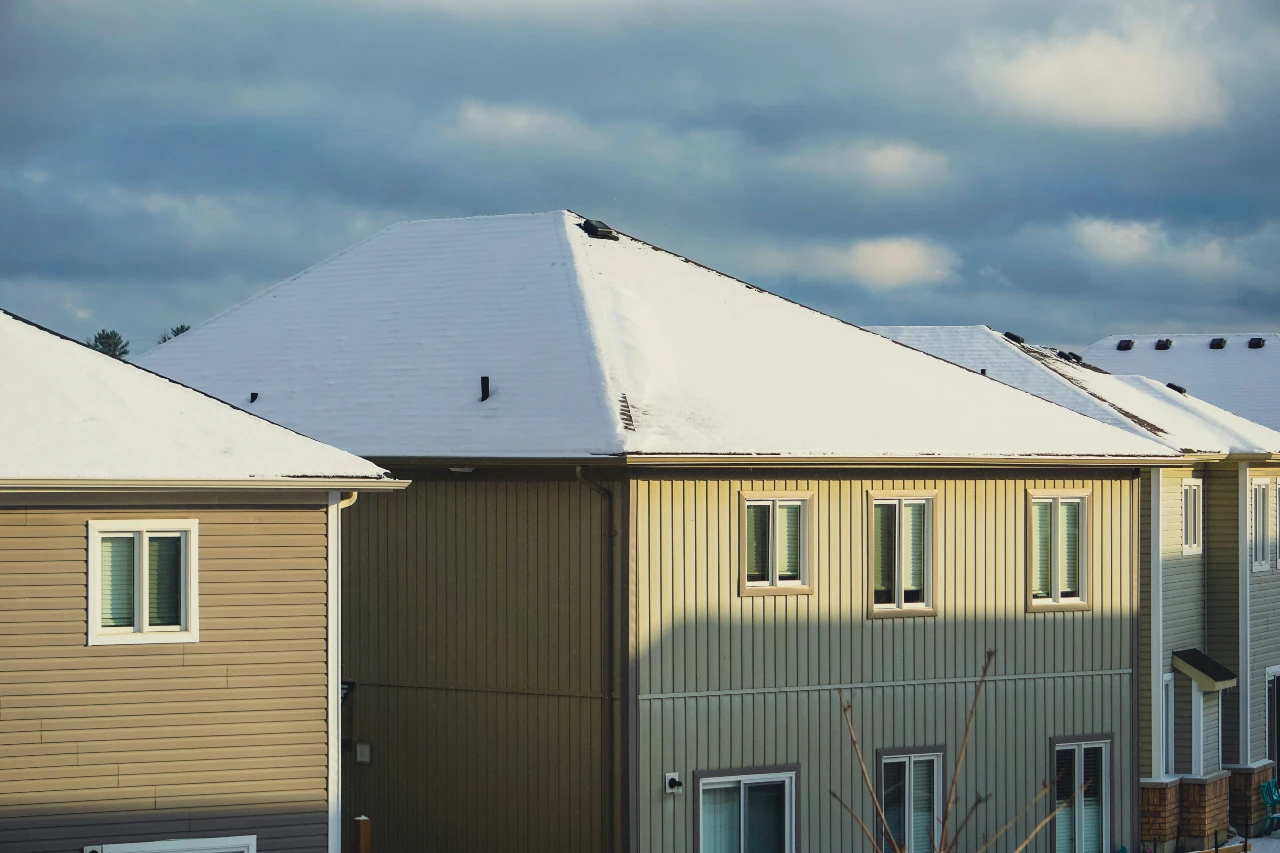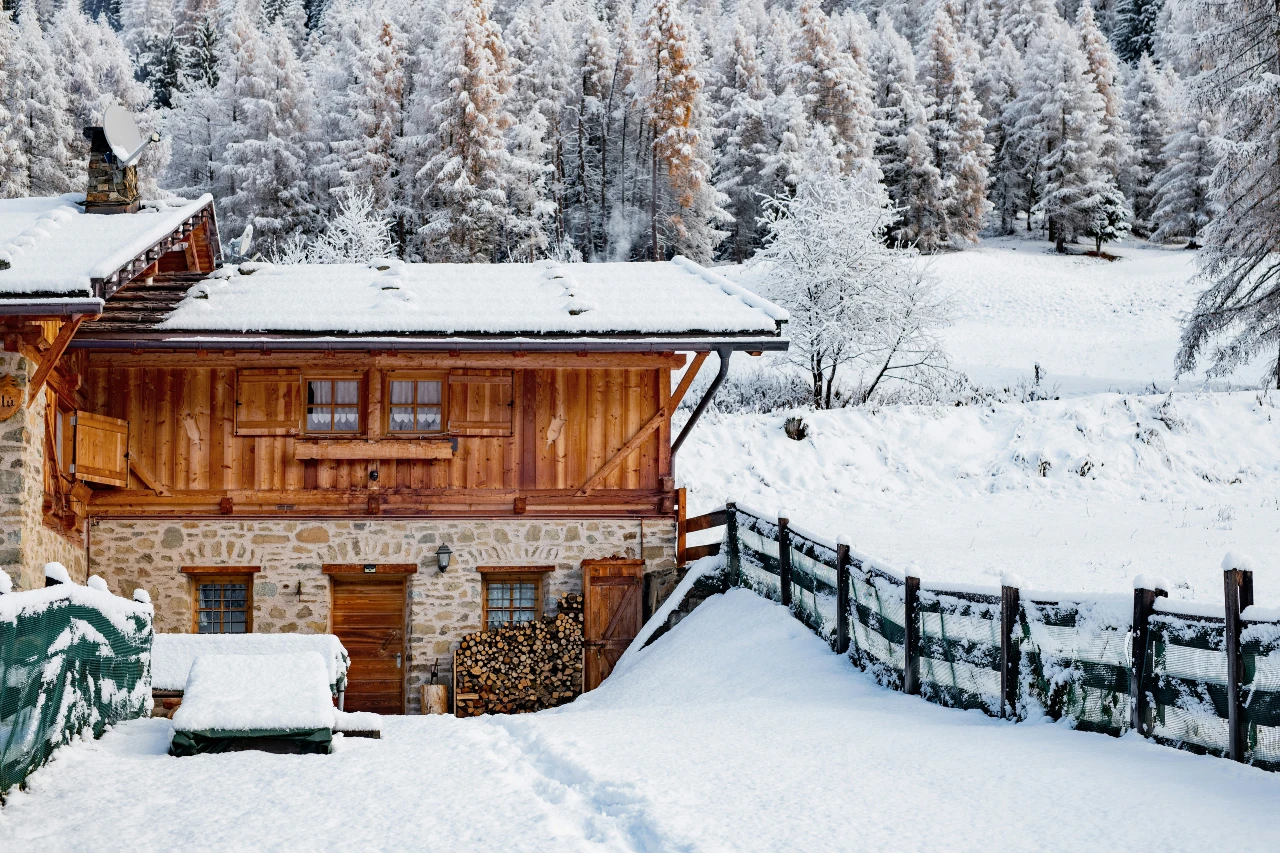You can feel it across the country; the winds of winter are approaching. And for landlords, that means taking extra steps to winterize your rental property and make sure it's properly equipped for your renters.
Winter weather can wreak havoc on rental properties, leading to costly damage and unhappy tenants. From frozen pipes to ice dams, landlords face unique challenges when temperatures drop. Proper winterization protects your investment, prevents emergency repairs, and ensures your tenants stay comfortable throughout the cold months.
Whether you manage a single-family home in Vermont, a mountain retreat in Colorado, or multiple units across Montana, preparing your rental property for winter should be a top priority. This comprehensive guide walks you through essential winterization steps to safeguard your property and maintain its value.
Inspect and service your heating system
Your heating system is the heart of winter property maintenance. Schedule a professional HVAC inspection at least 30 days before cold weather arrives. A qualified technician should clean the furnace, check for carbon monoxide leaks, replace filters, and ensure all components function properly.
For properties in colder regions like Alaska or Montana, consider upgrading to a programmable thermostat if you haven't already. This allows tenants to maintain consistent temperatures while managing energy costs. Remind tenants to change filters monthly during winter and provide clear instructions on basic heating system operation.
If your rental property uses alternative heating sources like wood stoves or fireplaces, have chimneys professionally cleaned and inspected. Creosote buildup poses serious fire risks, and landlords are responsible for maintaining these features in safe working condition.
Protect your plumbing from freezing
Frozen pipes rank among the most expensive winter disasters for landlords. When water freezes, it expands, causing pipes to burst and flood properties with hundreds of gallons of water. Prevention is far cheaper than repair.
Start by insulating exposed pipes in unheated areas like basements, crawl spaces, attics, and garages. Foam pipe insulation is inexpensive and easy to install. Pay special attention to pipes along exterior walls and in unheated spaces.
Seal gaps and cracks around pipes where they enter the building. Even small openings let in cold air that can freeze pipes. Use caulk or expanding foam to close these entry points.
For vacant properties or seasonal rentals in ski areas around Colorado, consider draining the water system entirely if the property will sit empty during freezing weather. Alternatively, maintain heat at a minimum of 55°F and have someone check the property regularly.
Educate tenants about preventing frozen pipes. Provide written instructions asking them to:
- Keep cabinet doors open under sinks during extreme cold
- Let faucets drip slightly during freezing nights
- Never turn the heat below 55°F, even when away
- Report any heating issues immediately
Clear gutters and downspouts
Clogged gutters cause ice dams, which force water under shingles and into your property. In regions with heavy snowfall like Vermont or Oregon, ice dams can cause thousands of dollars in damage to roofs, ceilings, and walls.
Clean all gutters and downspouts before winter arrives. Remove leaves, twigs, and debris that block water flow. Ensure downspouts direct water at least 5-6 feet away from the foundation to prevent basement flooding and foundation damage.
Consider installing gutter guards to minimize future buildup, especially if your rental property sits beneath large trees. While this represents an upfront investment, it reduces maintenance and protects against winter water damage.
Inspect the roof and make necessary repairs
Your roof takes the brunt of winter weather. A small leak becomes a major problem when snow melts and refreezes, expanding cracks and gaps. Schedule a professional roof inspection before winter, or carefully inspect it yourself if you're comfortable doing so.
Look for:
- Missing, cracked, or curling shingles
- Damaged flashing around chimneys and vents
- Signs of wear around roof penetrations
- Moss or algae growth that can trap moisture
Make repairs before the first snow. Addressing these issues in fall costs far less than emergency repairs during winter or dealing with interior water damage.
For properties in areas with heavy snow loads, ensure your roof structure can handle the weight. Some older buildings in Maryland or mountainous regions may need reinforcement.

Seal windows and doors
Heat loss through poorly sealed windows and doors drives up utility bills and leaves tenants uncomfortable. Walk through your rental property and check every window and door for drafts.
Replace worn weatherstripping around doors and windows. Apply fresh caulk where needed, paying attention to gaps between window frames and siding. For older windows, consider plastic window insulation kits that create an additional barrier against cold air.
Check that all windows close and lock properly. Ensure storm windows are in place if your property has them. These simple fixes improve energy efficiency and tenant satisfaction while protecting your property from moisture infiltration.
Trim trees and remove hazards
Heavy snow and ice can bring down tree branches, damaging roofs, siding, vehicles, and power lines. Survey your property for dead branches, diseased trees, or limbs hanging over structures.
Hire a professional tree service to trim or remove problematic trees before winter. This is especially important for landlords in areas that experience ice storms, where the weight of ice accumulation can snap healthy branches.
Also remove or secure any outdoor items that could become projectiles in winter storms—loose patio furniture, planters, decorations, or tools.
Service snow removal equipment and plan for clearing
If you're responsible for snow removal at your rental property, service your snow blower or plow equipment before the first snowfall. Change the oil, replace spark plugs, and ensure it starts reliably.
For properties where you hire snow removal services, establish contracts before winter. Many services get booked up quickly once snow starts falling. Ensure your contract clearly defines:
- When service will be provided (after how many inches)
- Which areas will be cleared (driveways, walkways, parking areas)
- Timing expectations
- Ice management and salting
Stock up on ice melt, sand, or salt for walkways and steps. In many jurisdictions, landlords are legally responsible for maintaining safe walking surfaces, and slip-and-fall accidents can result in serious liability claims.
Check and test smoke and carbon monoxide detectors
Winter brings increased risks of fire and carbon monoxide poisoning as heating systems run continuously and tenants may use alternative heat sources. Test every smoke detector and carbon monoxide detector in your rental property.
Replace batteries in all units, even if they seem to be working. For hardwired detectors, test the backup batteries. Replace any detectors that are more than 10 years old.
Provide tenants with fire safety information, including:
- Emergency exit routes
- The location of fire extinguishers
- Instructions to never use ovens for heating
- The dangers of space heaters near flammable materials
Ensure proper attic insulation and ventilation
Adequate attic insulation keeps heat inside your rental property, reducing energy costs and preventing ice dams. The recommended insulation level varies by region, but most cold-climate areas need R-38 to R-60.
Check your attic insulation depth and condition. If it's compressed, wet, or insufficient, add more before winter. This investment pays for itself through lower heating bills and helps attract and retain quality tenants who appreciate comfortable, energy-efficient homes.
Equally important is attic ventilation. Proper airflow prevents moisture buildup that can lead to mold, wood rot, and premature roof failure. Ensure soffit vents and ridge vents are clear and functioning.
Winterize outdoor faucets and irrigation systems
Outdoor plumbing is particularly vulnerable to freezing. Disconnect and drain all garden hoses. Shut off water to outdoor faucets from inside the property, then open the exterior faucets to drain remaining water.
Consider installing frost-free outdoor faucets if your rental property doesn't already have them. These prevent freezing by keeping the shutoff valve inside the heated space.
If your property has an irrigation system, have it professionally winterized. This typically involves blowing out all water from the lines using compressed air. A single night of hard freeze can destroy an entire irrigation system if water remains in the lines.

Prepare for emergency situations
Winter storms can knock out power for hours or days. Create an emergency preparedness plan for your rental property and share it with tenants.
Provide tenants with:
- Emergency contact information (your number, a 24-hour maintenance line, utility companies)
- Instructions on where to find the main water shutoff and electrical panel
- Guidance on what to do if heat fails
- Information about emergency shelters if needed
For Airbnb or vacation rentals in popular winter destinations, stock emergency supplies including flashlights, batteries, blankets, and basic first aid items. Keep extra space heaters on hand (with safety instructions) in case primary heating fails.
Consider investing in a backup generator for properties in remote areas or regions prone to extended power outages. This protects your property and provides peace of mind for both you and your tenants.
Review your rental property insurance coverage
Winter weather events highlight the importance of comprehensive landlord insurance. Before the cold season arrives, review your policy to ensure you have adequate coverage for winter-specific risks.
Key coverages to verify include:
- Dwelling coverage: Protects the physical structure from damage caused by snow, ice, and winter storms
- Loss of rental income: Compensates you if winter damage makes your property uninhabitable and you lose rental income
- Liability protection: Covers legal expenses if someone is injured on your property due to ice, snow, or winter hazards
Many standard policies exclude certain types of water damage or have specific requirements for vacant properties during winter. Understand these exclusions and take required preventive measures to maintain coverage.
If you rent to short-term guests through platforms like Airbnb, ensure your policy covers short-term rental activities. Standard homeowners insurance typically doesn't cover commercial rental activities.
For landlords managing multiple properties across different states, coverage requirements and weather risks vary significantly. A rental property in New York City, NY faces different winter challenges than a mountain cabin in Colorado.
Communicate with your tenants
Your tenants are your first line of defense against winter property damage. Clear communication helps prevent problems and ensures issues get reported quickly.
Before winter, provide tenants with:
- A winterization checklist of their responsibilities
- Your contact information for emergencies
- Instructions on preventing frozen pipes
- Expectations for snow removal (who does what)
- Reminder to report heating problems immediately
Consider creating a simple welcome packet or email for winter that addresses common questions and concerns. Many tenant-caused winter problems stem from lack of knowledge rather than negligence.
Encourage tenants to report issues promptly. Make it clear that you prefer to fix a small problem quickly rather than deal with a major disaster later. A dripping faucet is cheaper to repair than a flooded basement.
Protect your investment with Steadily
Winterizing your rental property requires time and investment, but it's far less expensive than dealing with frozen pipes, ice damage, or displaced tenants. As a landlord, taking these preventive steps protects your property value and demonstrates your commitment to providing safe, comfortable housing.
Even with the best preparation, winter weather can be unpredictable. That's why having the right rental property insurance is essential. Steadily specializes in landlord insurance that protects your investment from winter storms, frozen pipes, and other seasonal hazards.
Get a quote from Steadily today and ensure your rental property is protected all winter long. Our policies are designed specifically for landlords, with coverage options that address the unique risks you face—including winter weather events that can damage your property and disrupt your rental income.
Don't wait until the first freeze to think about protection. Take action now to winterize your rental property and secure comprehensive insurance coverage that gives you peace of mind throughout the coldest months of the year.






.png)
.jpg)
.jpg)


.png)